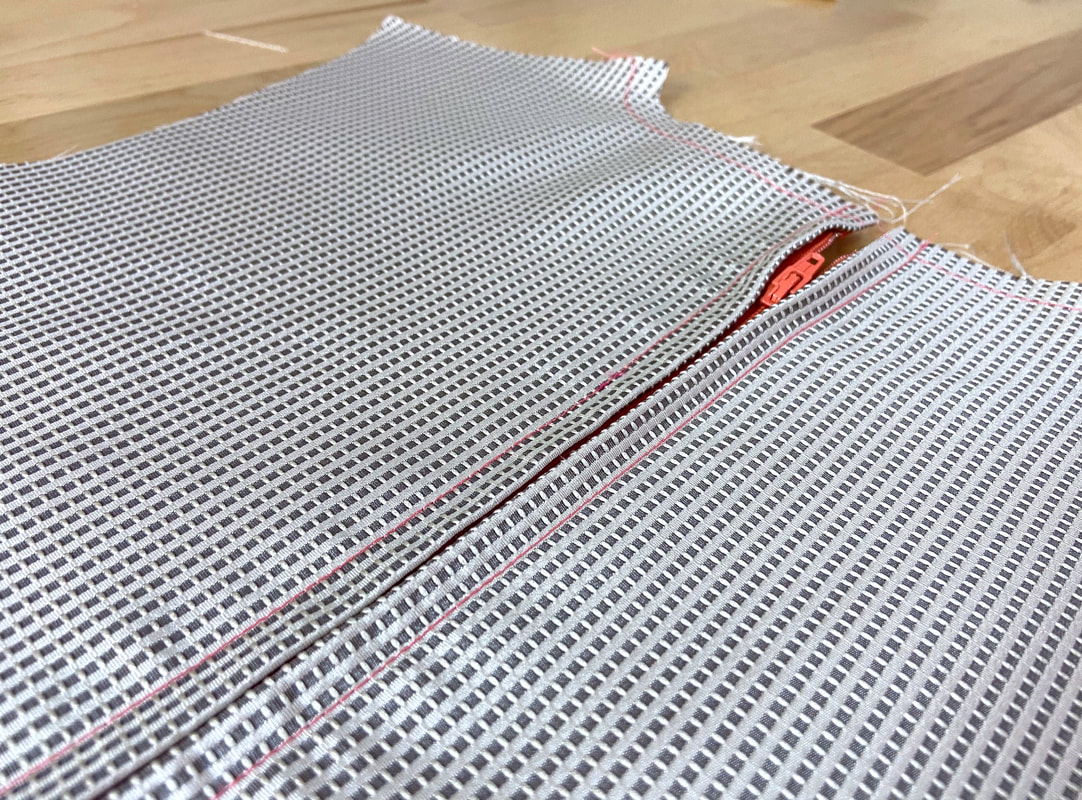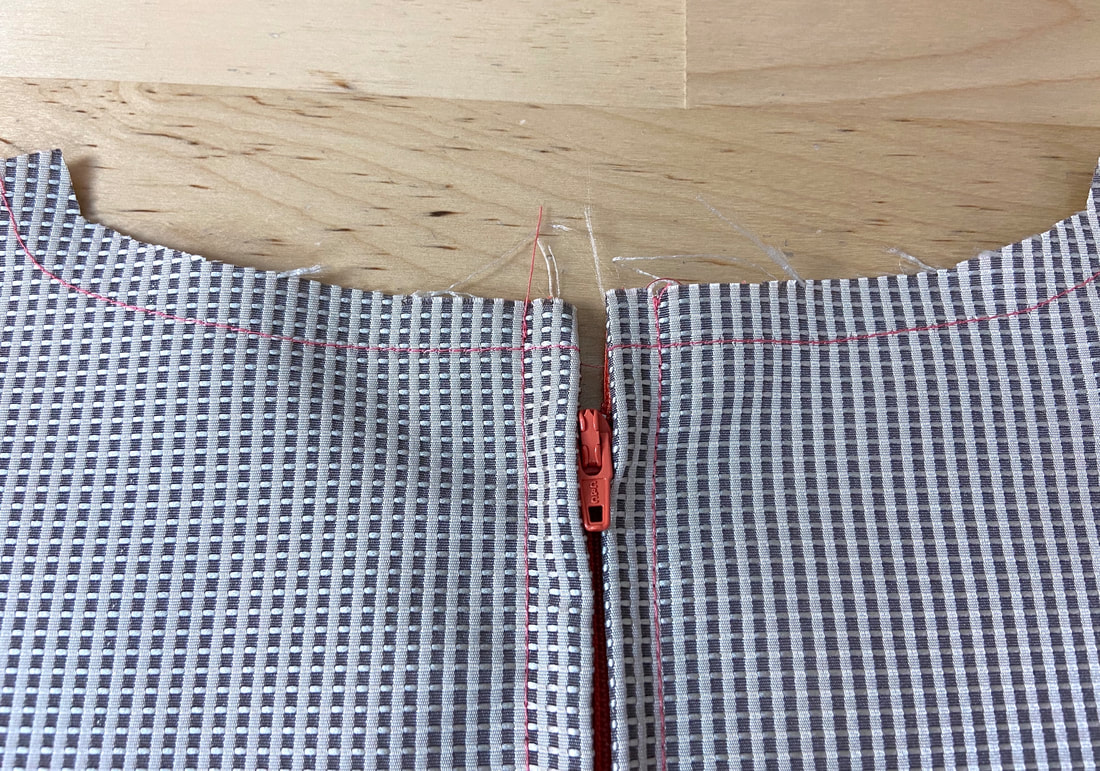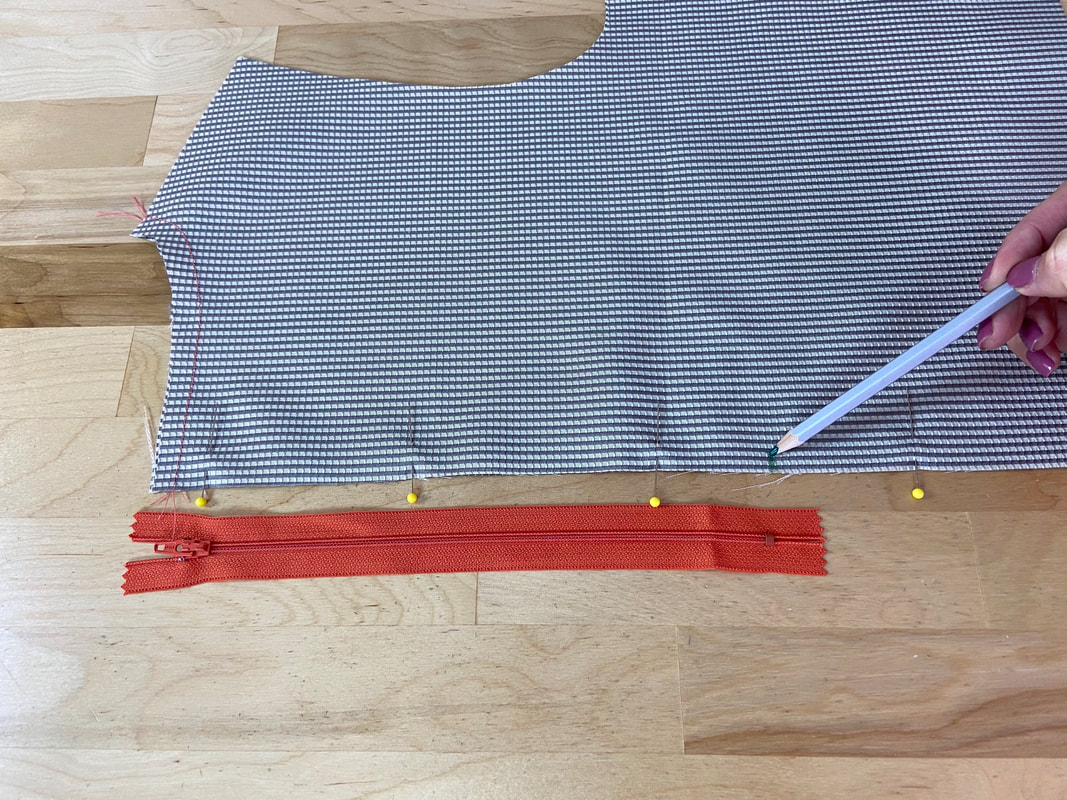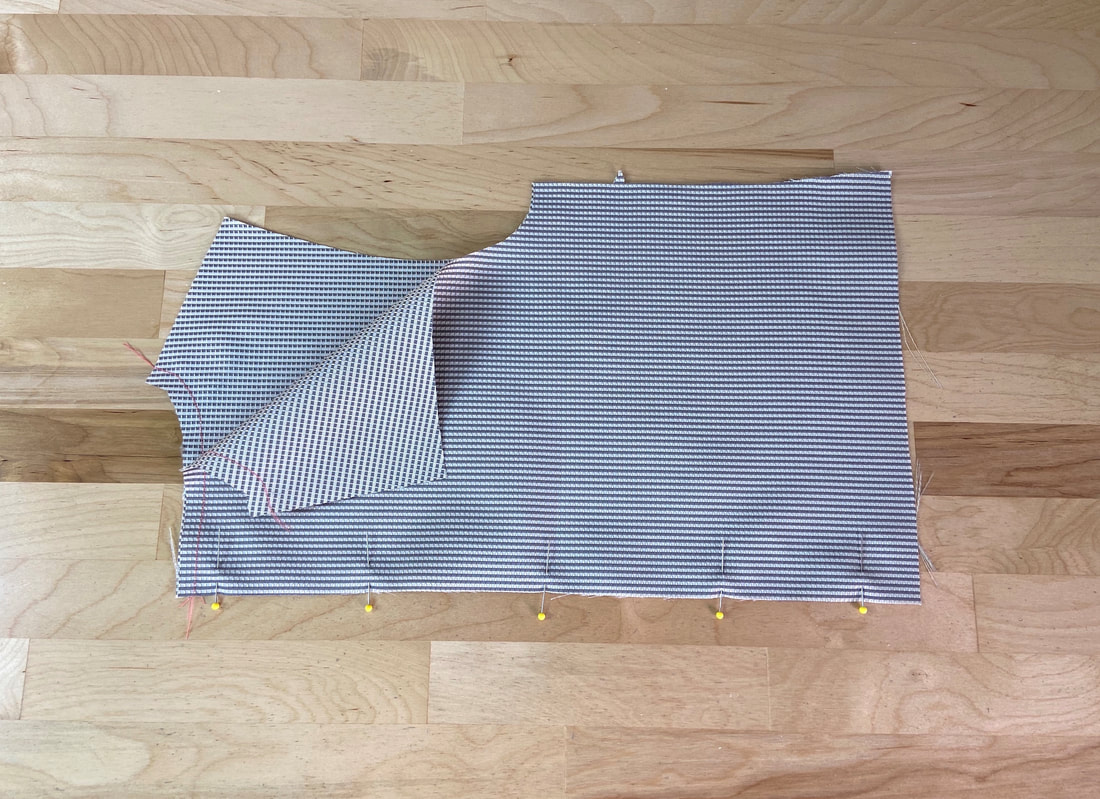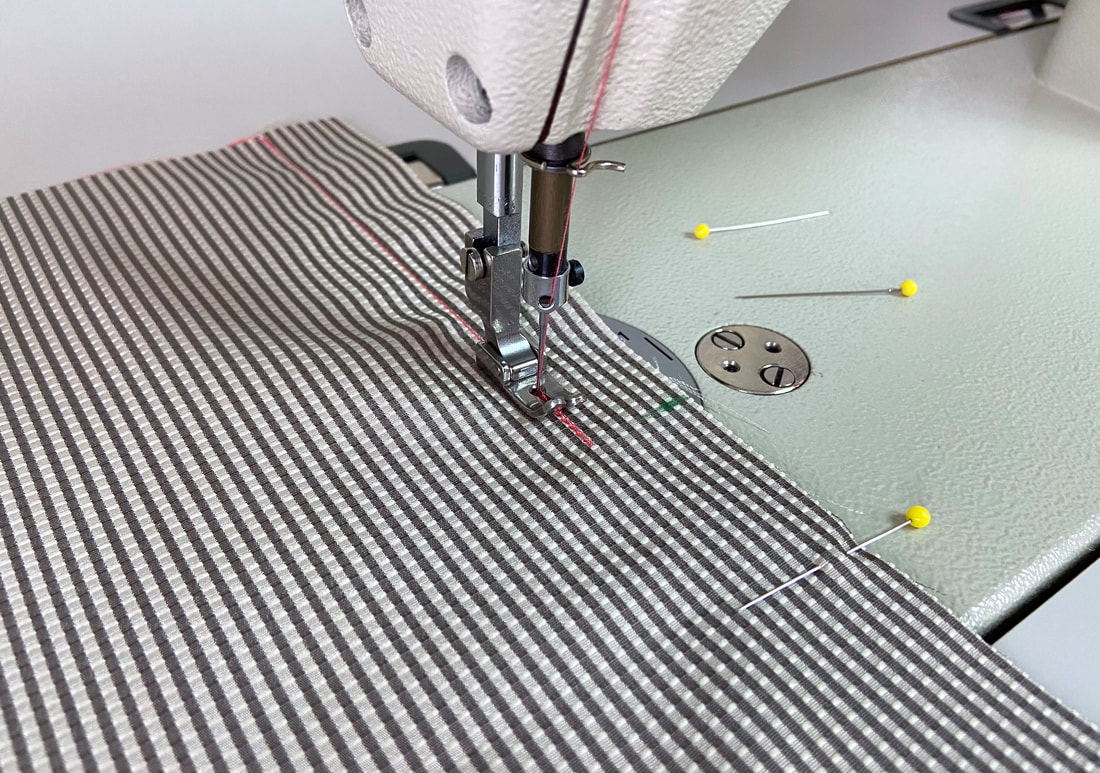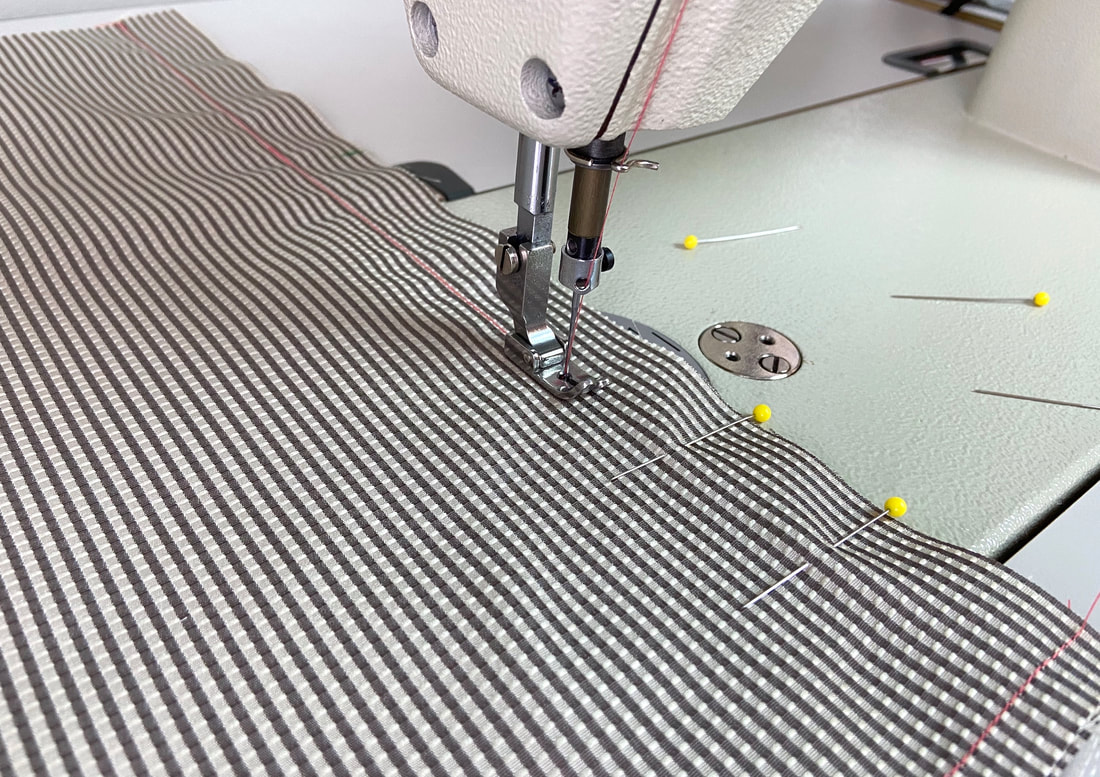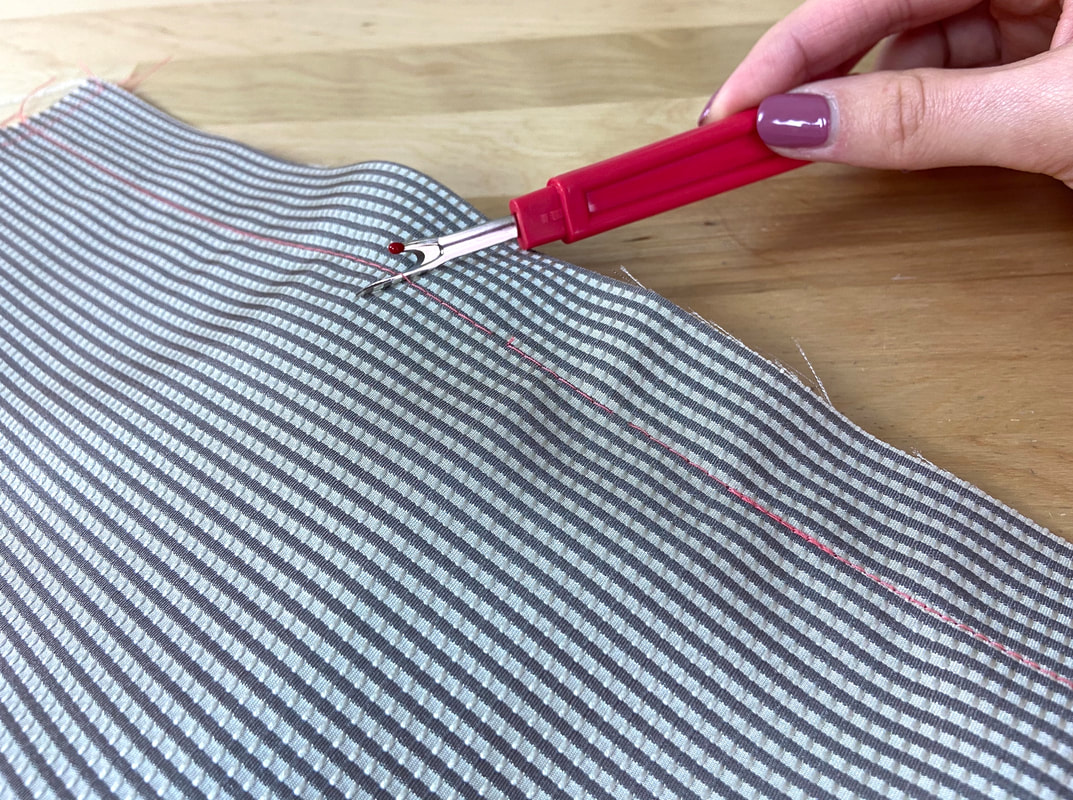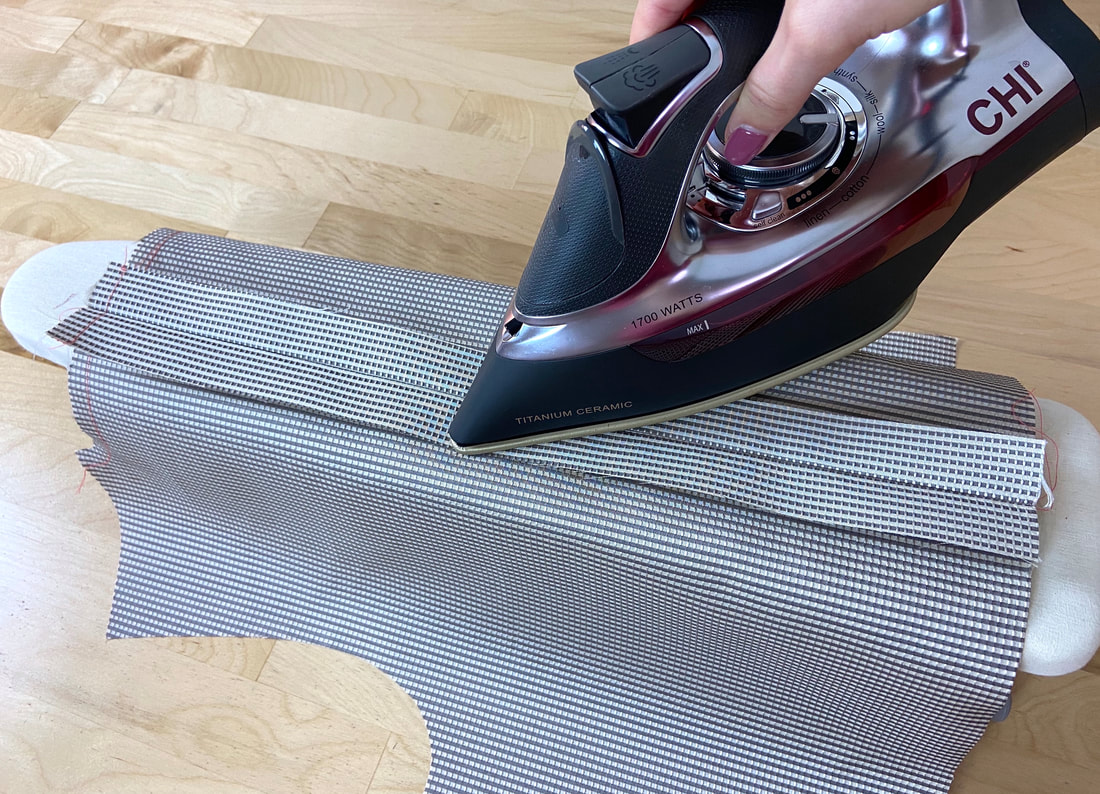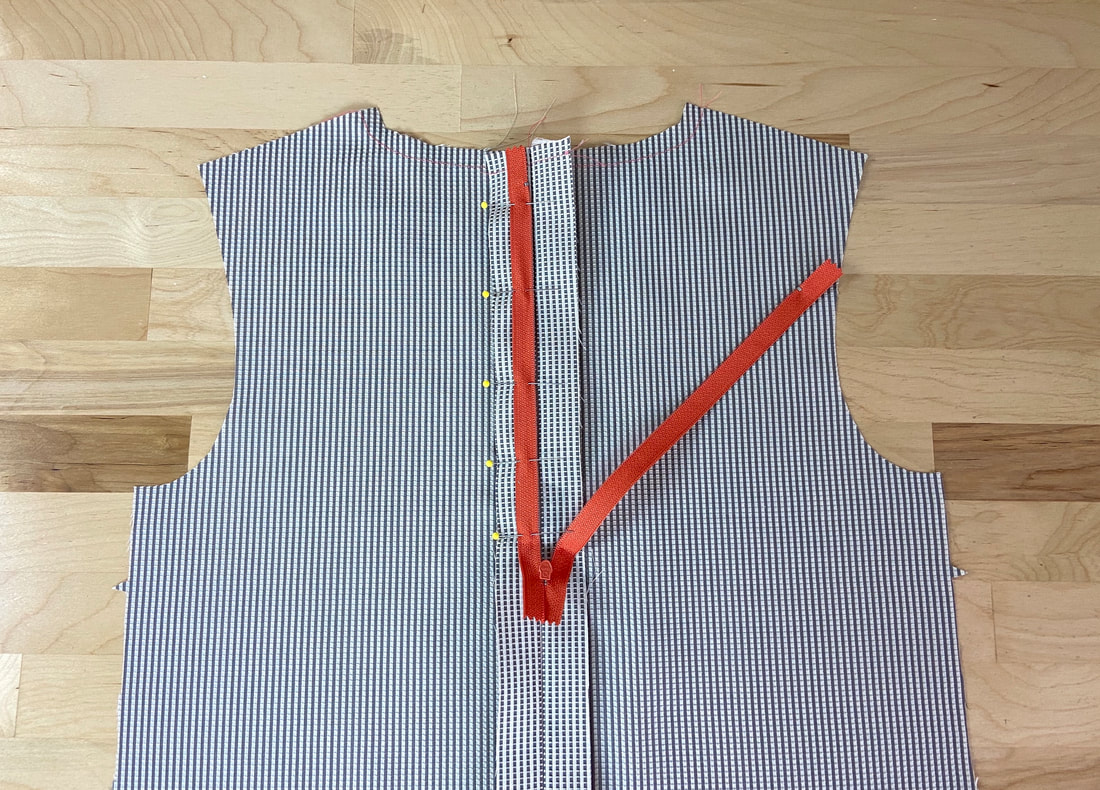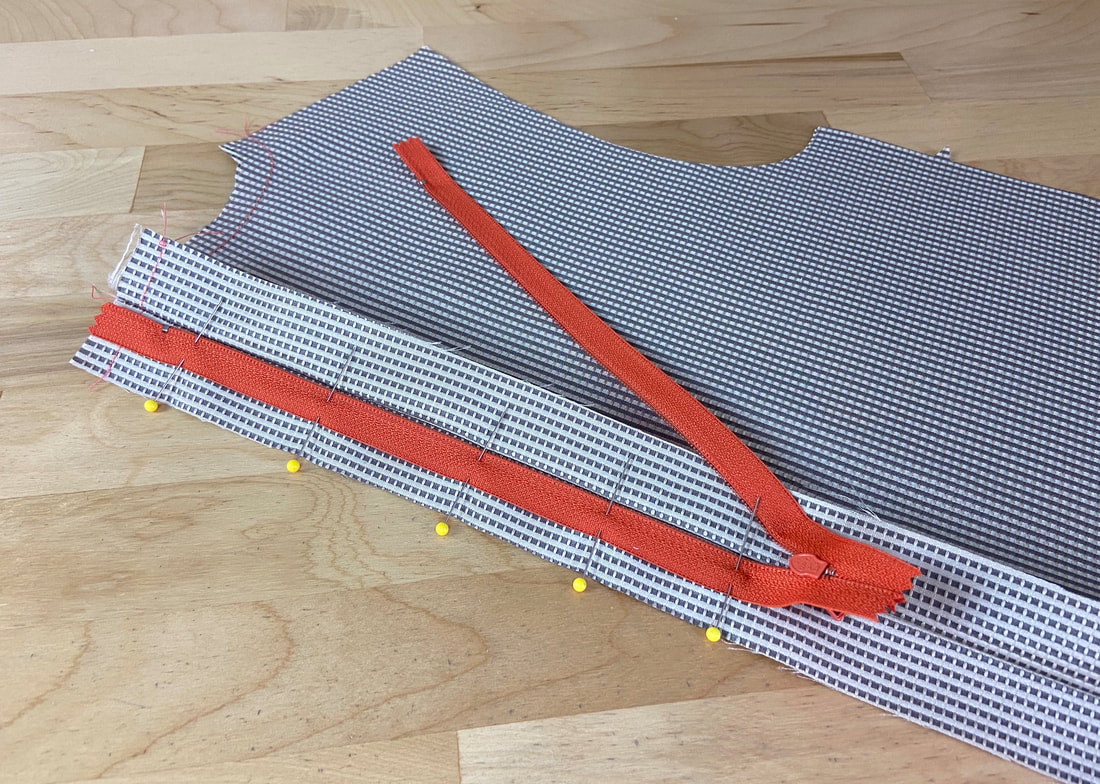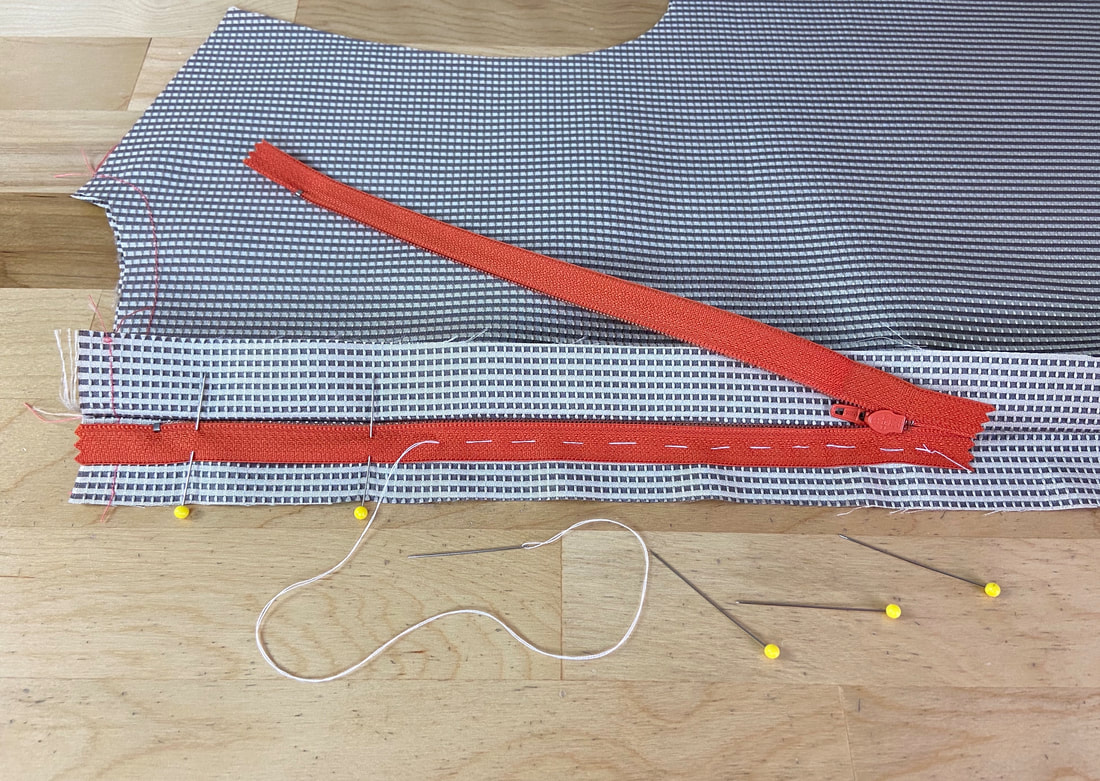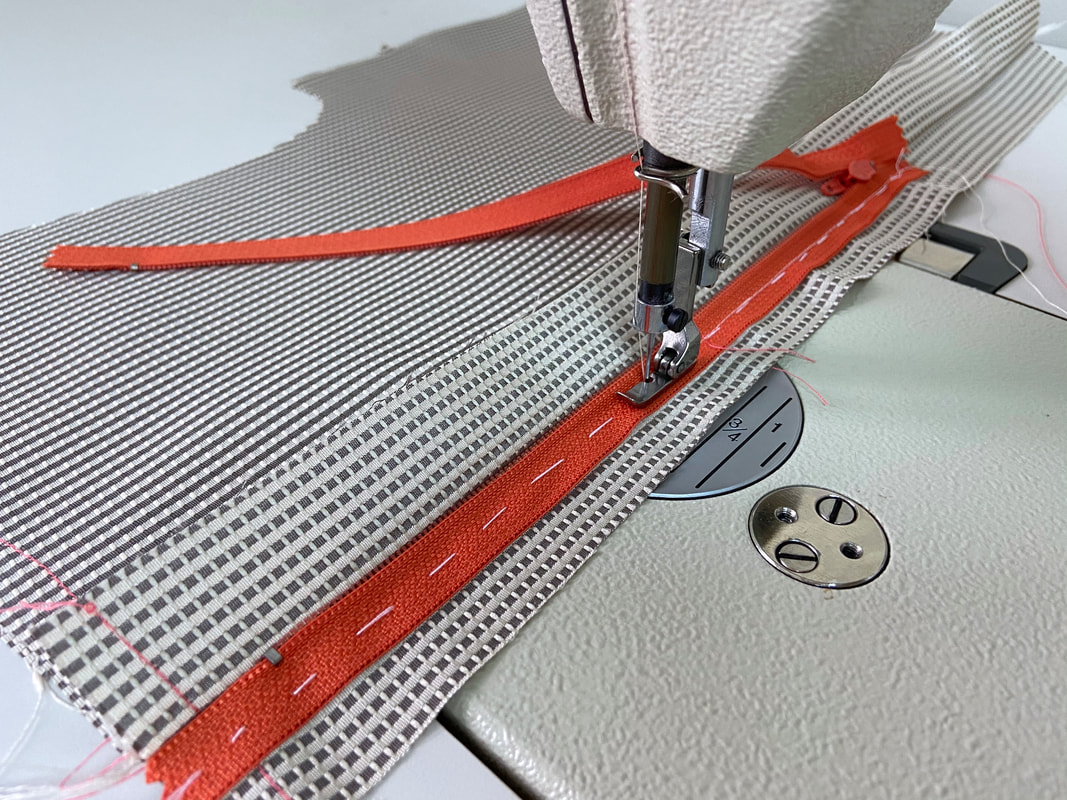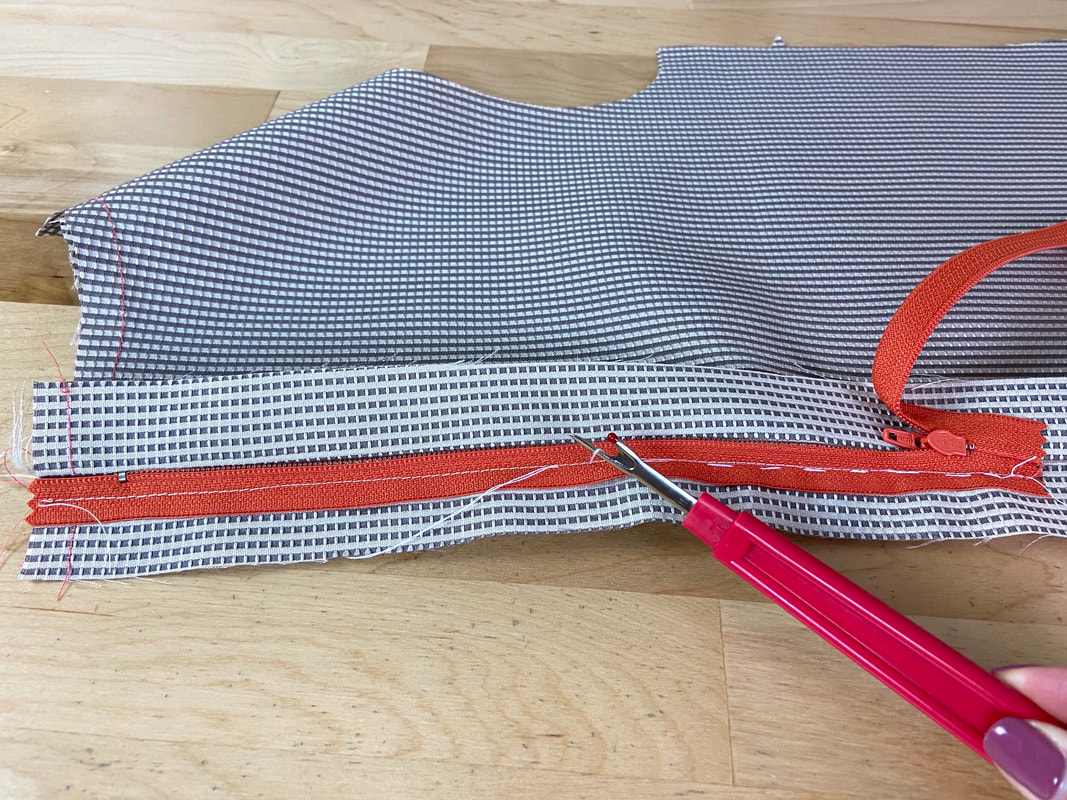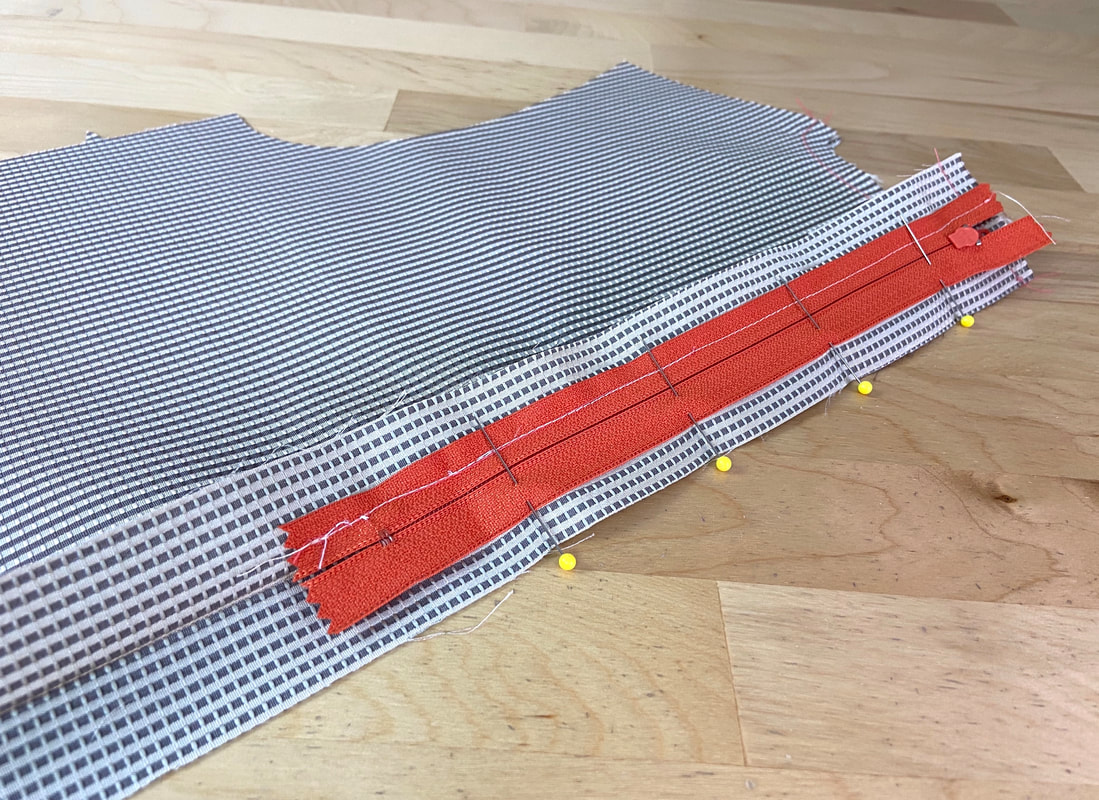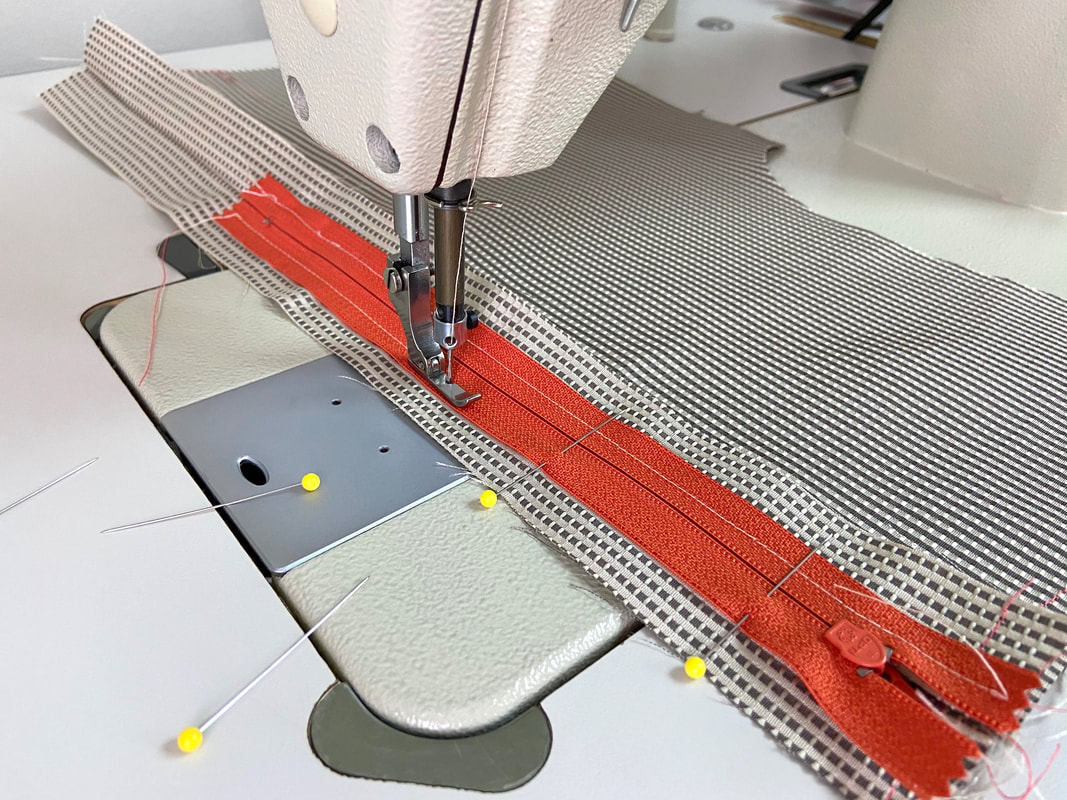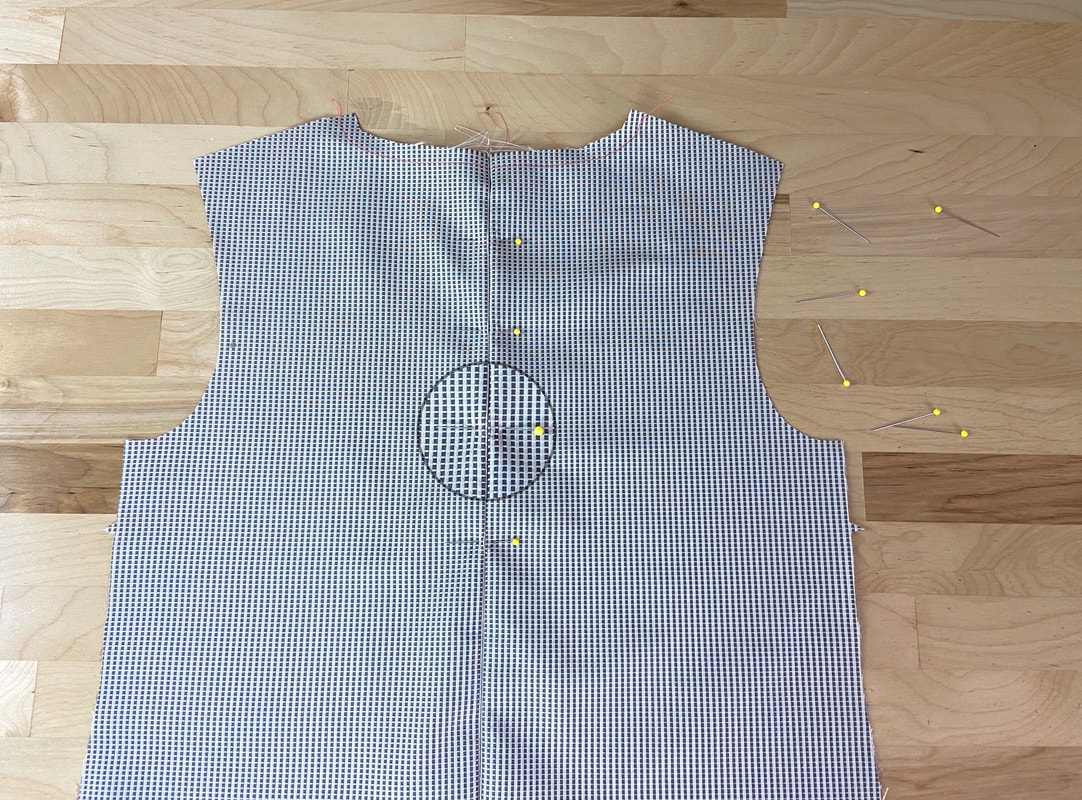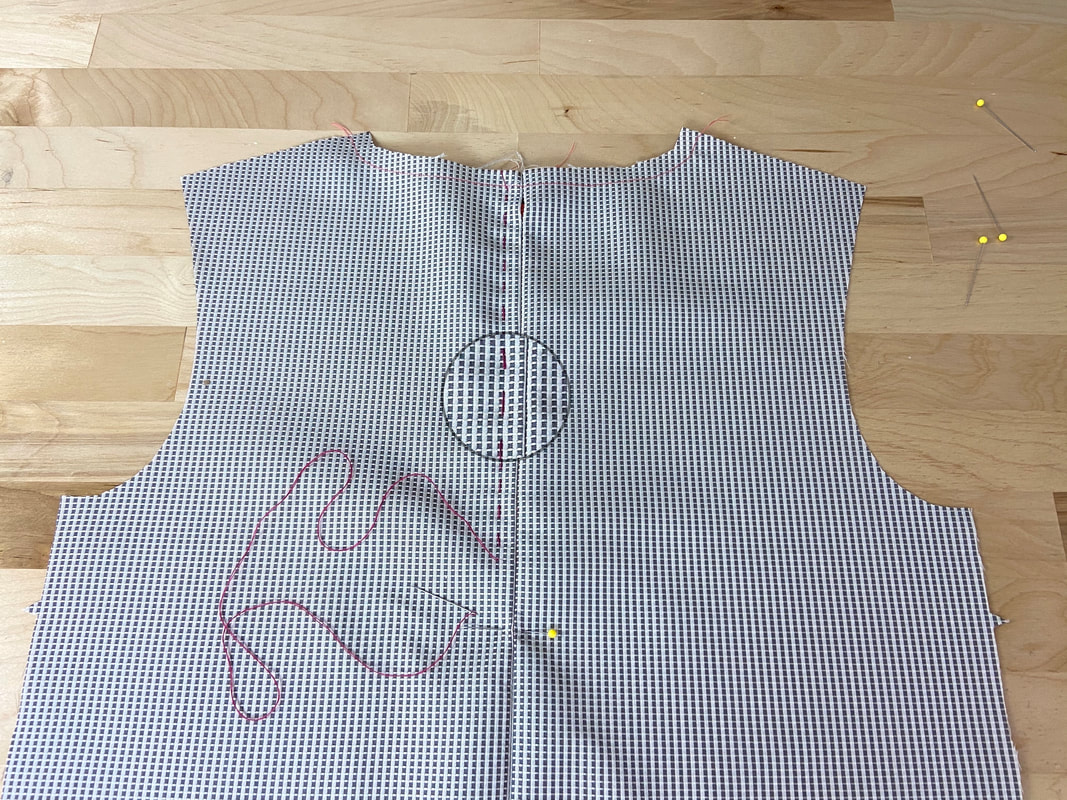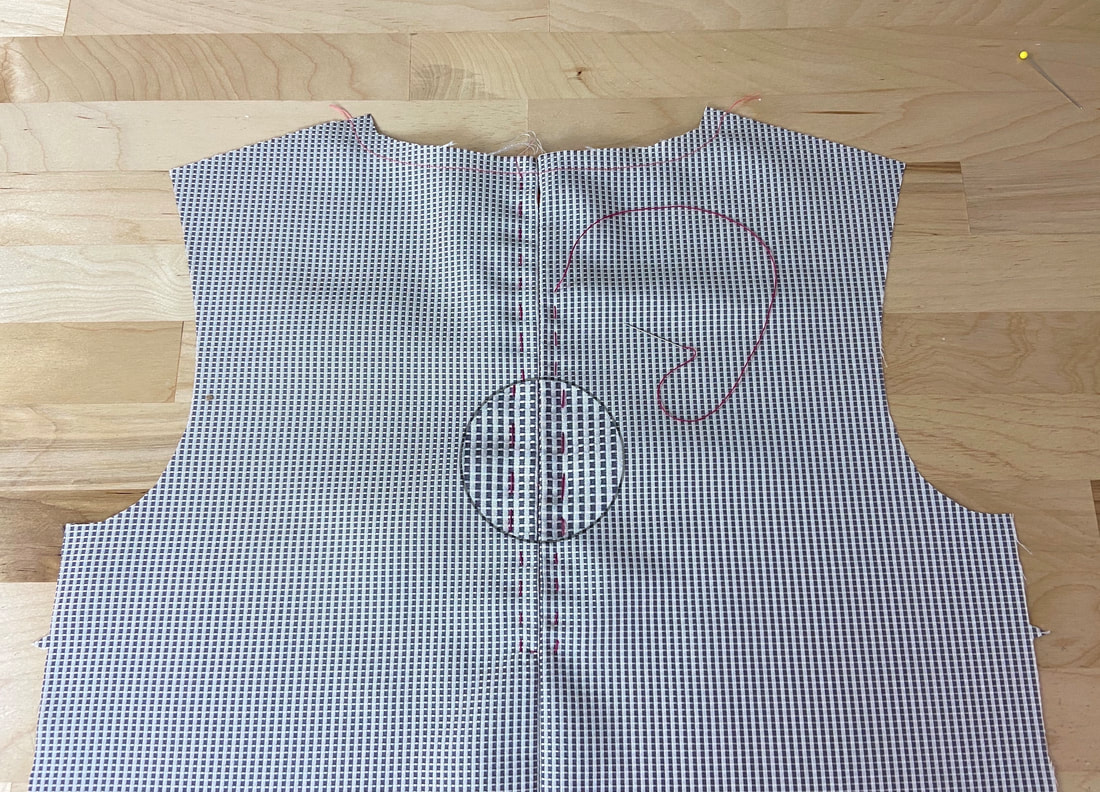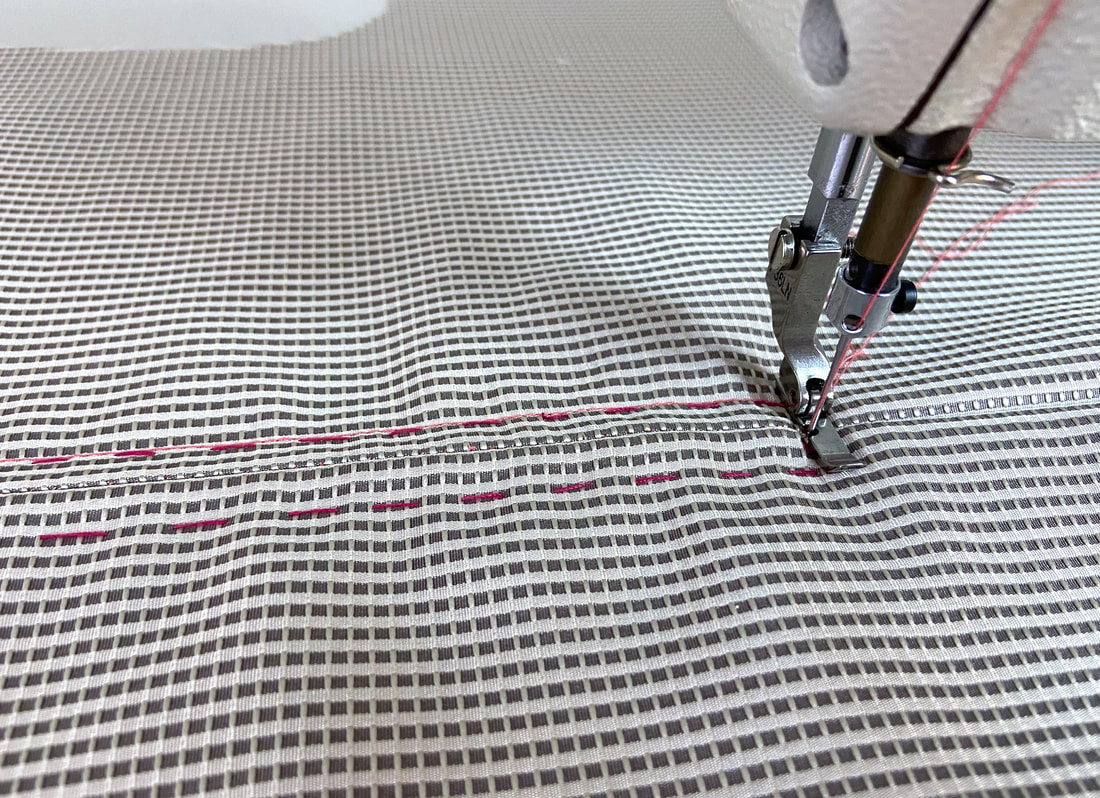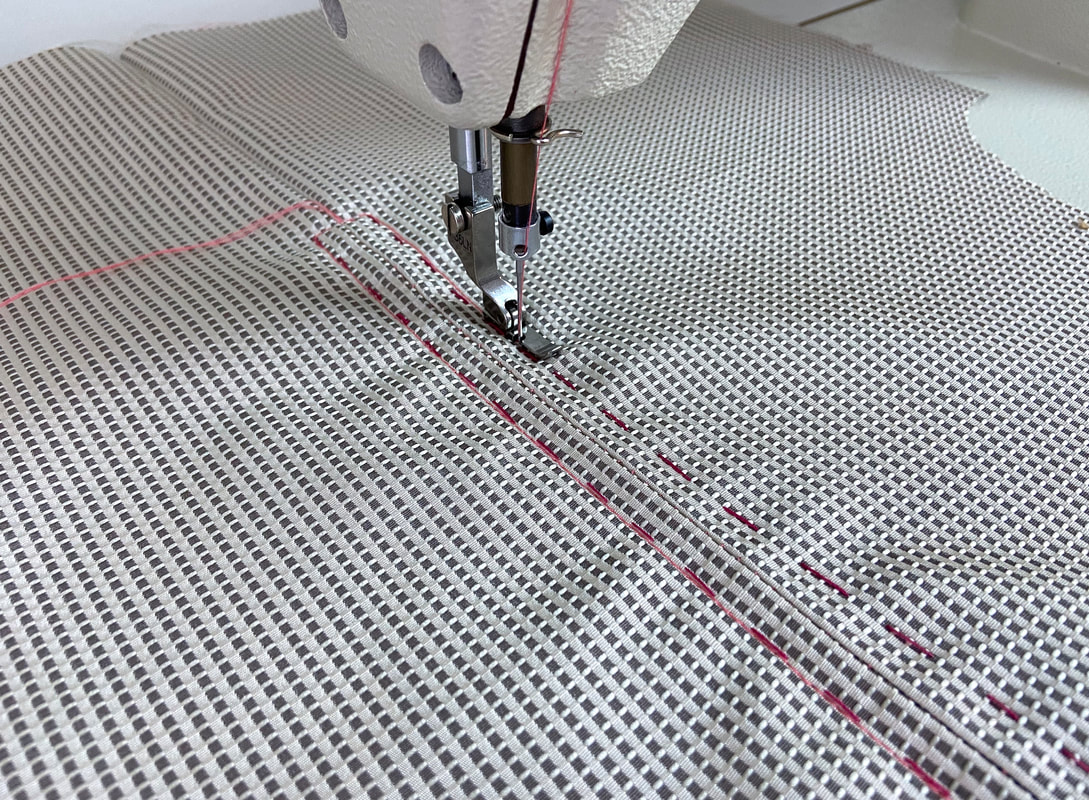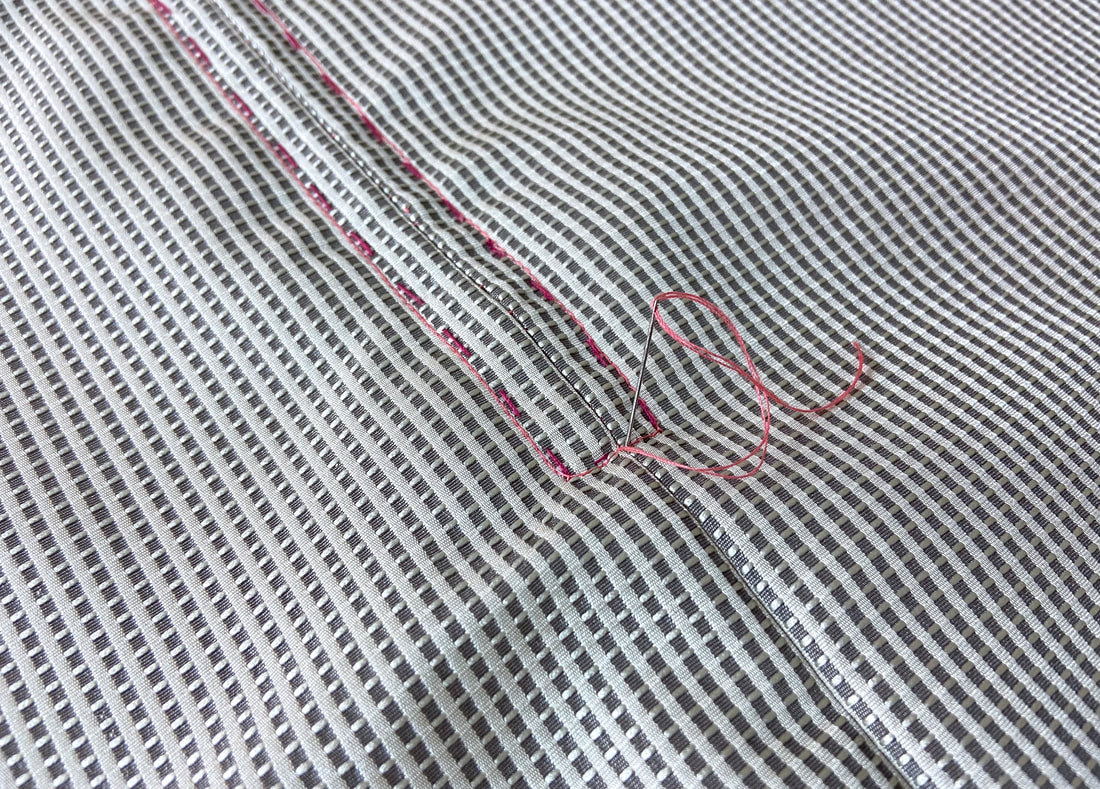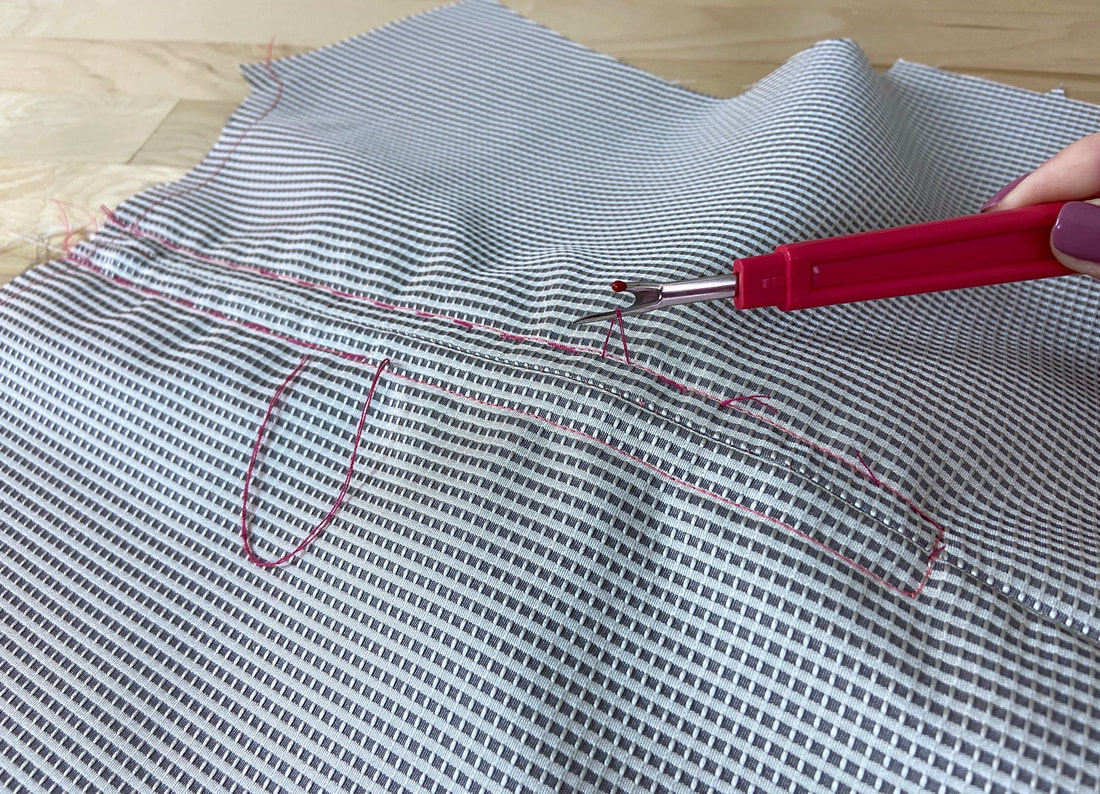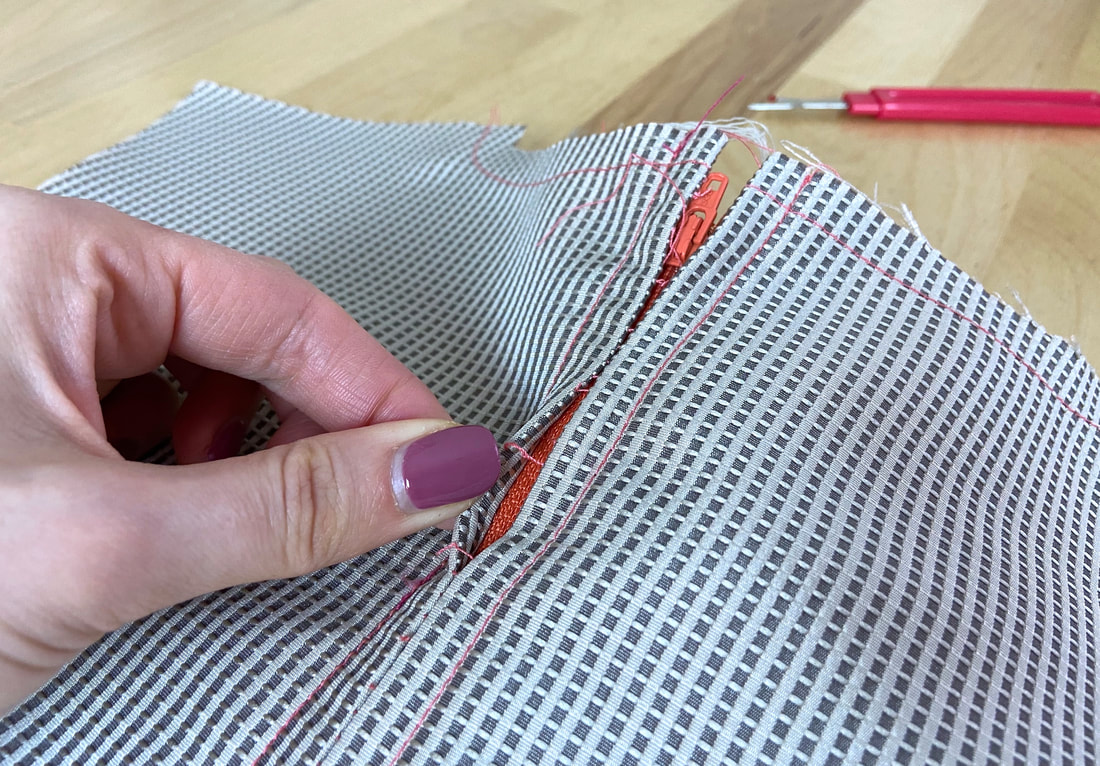What Is A Centered Zipper
A centered zipper is similar in look and construction to a conventional lapped zipper application. However, as opposed to a lapped zipper which has a single placket on the left side, a centered zipper has two equally sized plackets, one on each side of the zipper opening.
The double placket provides a more visually balanced look. It also enhances the functionality of the zipper by allowing for easy zipping and unzipping from both sides of the application.
Similar to all zipper applications that intersect a top edge, the zipper’s placement along the seam is important. How far to position the zipper from the garment’s top edge should be decided based on the type of finish applied to this edge.
If a facing will be used, allow about 3/8”-1/2” distance from the zipper stop to the top seamline. This distance accounts for folding the facing inwards and the addition of a hook-and-eye or small button.
If you choose not to use a hook-and-eye (or similar reinforcement) at the top zipper opening, place the zipper stops right next to the seamline. When the top edge of the garment is finished, the zipper will close all the way to this finished edge.
Here are a few additional things to keep in mind when sewing a centered zipper application:
- Keep the seam closed with a machine basting stitch during the zipper application process.
- The zipper should be closed for most of the application process, except for when the first portion of the zipper tape is attached to the garment seam allowance.
- Hand baste the top of the zipper plackets prior to machine topstitching. The basting will serve as a topstitching guideline while also keeping all placket layers flat underneath.
- For added comfort, machine stitch from bottom to top.
All of these important concepts (and more) are shown in the sewing steps below.
Sewing A Centered Zipper Application
1. Measure the zipper opening along the seam that will house it. Mark with tailor’s chalk, slash notch or simply insert a pin at the bottom zipper location.
2. Starting from the bottom (hem) of the garment, stitch the seam regularly, following the designated seam allowance (1” in this example), until you arrive at the mark applied in Step 1. Backstitch at this point.
3. Switch the stitch setting on your machine to basting, or longest stitch available, and complete the rest of the seam using this stitch length.
4. Snip through every 5-6 stitches with your seam ripper as shown. Be careful not to pull the seam open.
5. Gently open and iron the seam allowance layers.
6. Align the open zipper face down such that the zipper’s bottom stop aligns with the mark from Step 1 above. Pin the right zipper tape to the right seam allowance layer (it helps to move all other garment layers out of the way) with the zipper teeth aligned to the seamline as shown.
Prior to stitching, hand baste or use a double-sided stick tape to keep the two layers securely in place, especially if you are not comfortable sewing zippers yet.
7. Using a regular zipper foot, stitch through the zipper tape and seam allowance underneath following the woven stitch guideline on the zipper tape.
Once stitched, remove the hand basting using a seam ripper.
8. Close the zipper. Align and pin the left zipper tape to the left seam allowance layer. Move all garment layers out of the way to facilitate the pinning process.
9. Switching the needle to the right of the zipper foot, and working from the bottom, stitch through the tape and seam allowance following the stitch guideline on the tape layer.
10. Keeping the zipper closed, flip the seam on its face side and using your hand, smooth out the seam portion housing the zipper. Insert a few pins to keep the layers flat.
11. Hand baste from the top zipper opening toward the bottom at about 1/4”-3/8” away from the zipper coils, capturing the seam allowance layer and zipper tape underneath.
12. At the bottom, hand baste underneath the zipper stop, pivoting the stitch at straight angles. Next, move back up towards the top garment edge on the other side of the zipper.
13. Using a zipper foot, topstitch next to the hand basting. Pivot the direction of the stitch at the bottom to create a 90-degree angle on each side.
For best results, topstitch in two stages: Start at the bottom horizontally then pivot up to topstitch lengthwise. Repeat on the other side of the zipper. As a result, you should have two equal plackets, one positioned on each side of the zipper teeth.
Move all threads to the garment's wrong side and tie them to secure.
14. At this point, remove all hand basting using a seam ripper.
15. Once complete, pull the machine basted seam apart and remove all loose threads.

